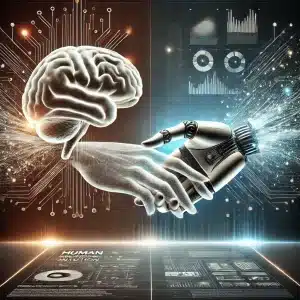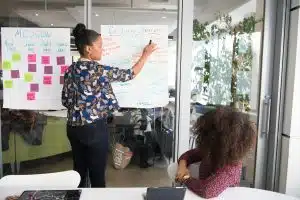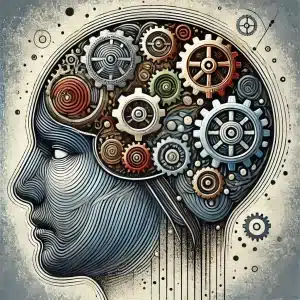As part of my Prosci Change Practitioner certification, I finished reading The ADKAR Advantage: Your New Lens for Successful Change published by Prosci. It is not just a recap of the well-known ADKAR model. It is a refresh, a deepening, and a reframing that speaks directly to the complexity and urgency of change today.
In my work supporting leadership, culture and transformation, I often see change initiatives struggle not because the strategy is wrong, but because the people side is overlooked. This book reinforces the critical truth that successful change happens one person at a time, and it offers a clear, human-focused roadmap for how to get there.
These are the key insights I took from the book, and how I believe they can be used to drive more effective, sustainable and people-centred change in our organisations.
A return to the individual
Prosci’s core belief has always been simple but often overlooked. Organisational change does not happen until individual change happens. If people do not adopt new mindsets or behaviours, nothing really shifts. Too many change efforts focus on systems, technology or structure without addressing the people involved.
This book brings us back to this truth with clarity. It urges us to stop asking how to fight resistance and instead ask how to build readiness. The difference is subtle but profound. Instead of seeing resistance as something to be overcome, we can focus on equipping people to face change with confidence. That shift transforms the energy of change work.
The three levels of change
The author, Karen Ball, MCMP™ organises the book into three parts, which map onto three levels of change:
- Individual change
- Group and team change
- Organisational change capability
This structure mirrors how change naturally unfolds. You start by guiding one person, then build patterns across teams, and finally embed change in the organisation’s culture and systems.
The first level is deeply human. It asks questions like: What does this person need to understand about the change? Do they want it? Do they know what to do? Are they able to do it? What will help them stay the course?
The second level brings in relationships, trust, sponsorship, influence and leadership communication. It is where patterns of behaviour begin to emerge and where alignment matters most.
The third level is about the long game. How does the organisation respond to change? How does it support its people? Is change reactive or proactive? This is where change capability becomes a strategic advantage.
The power of the ADKAR lens
ADKAR is more than an acronym. It is a diagnostic tool, a coaching structure and a change design map all in one. Each element represents a human outcome. All five are needed for successful change.
Awareness means someone understands why a change is happening. It is not about slogans or posters. It is about credible and clear communication that answers the question why.
Desire is the motivation to support or engage in the change. It comes from personal connection, trust in leadership and seeing value in the outcome.
Knowledge refers to knowing how to change. This might include training, mentoring, instructions or simply clarity on what is expected.
Ability is the capacity to turn knowledge into action. It is built through practice, support and removing obstacles.
Reinforcement is what ensures the change sticks. It might include recognition, feedback, results or cultural alignment.
Ball reminds us that these five are sequential and cumulative. If one is missing, the change falters. For example, if people are trained (Knowledge) but lack motivation (Desire), the change does not happen. If they try the new way (Ability) but no one notices or supports them (Reinforcement), they revert. ADKAR lets you diagnose exactly where the breakdown is.
Readiness is the new resistance
For me one of the book’s most important insights is a reframe. Instead of focusing on managing resistance, we should focus on building readiness. This is not just semantics. It shifts the conversation from control to empowerment.
When we ask if people are ready, we look for what is missing. Are they aware of the change? Do they care? Do they know what to do? Do they feel capable? Will they be supported?
This lens gives leaders, HR professionals and change agents a more constructive approach. It respects people’s responses and focuses on support rather than blame.
Scaling change without losing sight of the individual
Scaling change does not mean repeating the same message 5000 times. Scaling change means building systems that support consistent human experiences. That includes:
- Equipping managers to have one-to-one conversations
- Using change agent networks and peer influence
- Creating feedback loops that surface what is really happening
- Aligning leadership behaviour with change messages
Ball points out that building organisational change capability is not about adding a change manager to every project. It is about making change part of how the business operates. That means investing in skills, systems and structures that support change over time.
Tools and practices you can use now
The book is rich with stories, practical tools and resources. There are QR codes that link to templates, exercises and self-assessments. Here are three ideas you can try immediately.
1. Map an individual or team through the ADKAR lens. Think of someone affected by a change. Where are they on each of the five outcomes (Awereness, Desire, Knowledge, Ability, Reinforcement)? What do they need next? This is a powerful coaching and planning tool.
2. Shift your language from resistance to readiness. In your conversations, start asking how ready people are rather than why they are resistant. This invites support, not shame.
3. Build sponsorship as a team sport.Change does not succeed because of a single senior sponsor. It succeeds because of a visible, aligned and engaged leadership network.
Implications for leaders and HR professionals
If you are leading people, guiding organisations or working in the business of change, this book gives you a language and set of practices that make sense. Here are some of my key takeaways:
- Change is not abstract. It is personal.
- Readiness must be designed and built, not assumed.
- Capability grows when people learn how to change and when leaders make change part of daily work.
- Language shapes behaviour. Shifting from resistance to readiness is not just helpful; it is transformative.
- ADKAR is not a one-off exercise. It is a mindset, a method and a mirror.
Final Thoughts
At a time when leaders are overwhelmed, employees are stretched and change fatigue is real, this book reminds us that successful change does not depend on slogans or systems. It depends on people. And people change one by one.
As I reflect on my own learning through the Prosci certification process, this book has sharpened my understanding and deepened my conviction. Change is not just about delivering initiatives. It is about enabling individuals to make their own journeys with awareness, motivation, capability and support.
Whether you are leading a transformation, coaching a team or navigating your own leadership role, I highly recommend reading this book. More than anything, it will help you see change through a new lens, one that puts people at the centre and turns insight into action.





